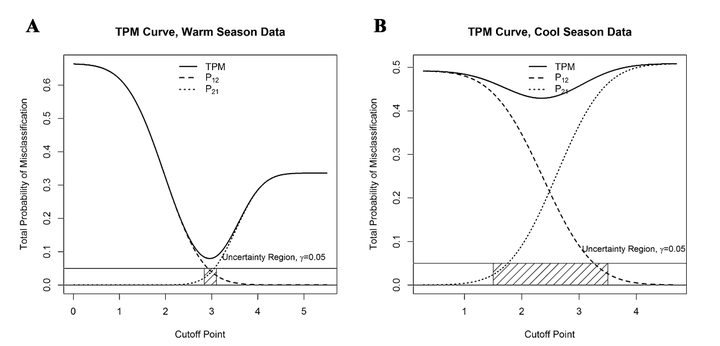Starch Content of Citrus Leaves Permits Diagnosis of Huanglongbing in the Warm Season but Not Cool Season

Abstract
One of the most prominent characteristics of huanglongbing (HLB or citrus greening)-affected citrus trees is the abundant starch accumulation in photosynthetic cells and all other remaining parenchyma cells of aerial parts. Under natural conditions, citrus leaves store very low levels of starch and detectable amounts are only seen as a result of zinc deficiency or accidental girdling of branches. Therefore, leaf starch concentrations over a threshold level should indicate the presence of HLB. In this report, we detailed a comprehensive statistical analysis of starch levels in citrus leaves and compared them with real-time polymerase chain reaction (PCR) detection of the presumptive causal agent Candidatus Liberibacter asiaticus. Starch content was found to reliably predict the PCR results (the proxy for HLB presence) during the “warm season” (June through November) but not in the “cool season” (December through May). During the cool season, starch levels for HLB-positive trees tend to be lower, and 43% of samples were incorrectly classified using Linear Discriminant Analysis (LDA). In contrast, during the warm season, only 8% were misclassified. Furthermore, assuming PCR possibly has error, the total probability of misclassification for HLB status could be controlled using an “uncertain” classification. The temporal pattern of leaf starch is consistent with our understanding of seasonal changes in plant development and bacterial titer.